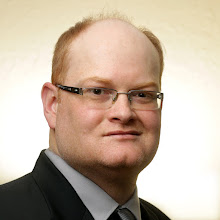The fifth-year forward, who posted a respectable 22 points in 27 AUS games last season, is a journalism major who played four seasons in the OHL with Brampton and the then Toronto-St. Michael's Majors. His first post laid out how the scholarship program in major junior hockey works.
"... it’s based on what your draft position is.Here is hoping Cassidy will stick with it and put a personable face on CIS hockey. Having insights from someone who's been on in the inside and writes well (see former Toronto Blue Jays executive Bart Given's Inside The Majors blog) is very beneficial.
"OHL teams offer more substantial education packages to the highest-rated prospects. For example, a first round draft pick will be offered somewhere in the range of $10,000-20,000 towards education for each full season completed in the league. So if a player is offered a package of $12,000 per season and he plays five years of junior, he can decide to claim that $60,000 as long as he’s enrolled in a post-secondary institution. I hope this isn't too confusing.
"The later you’re selected in the draft, the less the package is worth.
"The catch is the money can be revoked if a player plays professional hockey for more than 18 months. It’s no wonder junior teams shower their top prospects with opportunities - they’re hoping the player signs a professional contract, so the team can be relieved of its financial commitment."
There are a lot of features of university hockey which bear explaining to a more general audience. Cassidy could certainly touch on what it's like to go from a 68-game marathon in junior to a 28-game schedule in the CIS and the adjustment to carrying a full course load. Another is the "rude awakening" phenomena that a lot of major junior grads are hit with when they come to university hockey. Many saunter in expecting university hockey will be a cakewalk, only to find out it's actually tougher than junior.
Cassidy also touched on the nature of the beast which is Atlantic University Sport men's hockey, where the Tommies represent the smallest school in the league. The way the joke should go is that STU is everyone's third-favourite team, with whoever's playing UNB in second (that's a compliment, Varsity Reds fans).
"The Tommies are an annual underdog. We compete against large schools like Dalhousie, St. Francis Xavier and Université de Moncton.No doubt some users might say, "Sager, aren't you bitter that a journalism student is writing for The Hockey News?" Hey, your humble agent has been published in the bible of shinny ... I had a letter published in Bruce Hood's Ask The Referee column in 1987 when I was 10. So there.
" ... Stay tuned and I’ll give you a taste of what the Canadian Interuniversity Sport (CIS) is all about."
Related:
Deciding between university and pro (Jason Cassidy's Blog)
Jason Cassidy moves up to the big leagues (STUTommies.com)

Thank God you mentioned UNB in your article or else UNB fans would start to question your "intergrity" as a blogger. Help us all if the world doesn't centre around UNB's hockey program.
ReplyDeleteGood for Jason Cassidy and good for CIS hockey.
OK, so being completely tongue-in-cheek, when I write the article, "5 teams no one would mind seeing join the NCAA," it had better include the V-Reds?
ReplyDeleteThat's supposed to be gentle good humour. We're among friends here.
Speaking as an avid Tommies fan, I could care less if UNB dropped off the face of the planet but in the end we love to hate them, so we would miss them.
ReplyDeleteMy point was that certain (not all) UNB fans are upset because Cassidy didn't give any love to UNB in his article. The Squirrels are national champions and everyone should bow down to their greatness and salute their success.